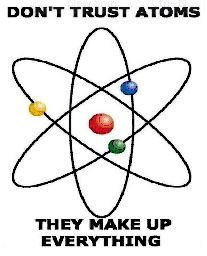The Myth Of Wind And Solar 'Capacity'
http://www.forbes.com/sites/alexepstein/2016/03/29/the-myth-of-wind-and-solar-capacity/#7f0c54c918dc
Last week, our Department of Energyâs Energy Information Administration released an announcement and a graph that appeared to show wind as the leading new source of electricity.
. . .
Such statistics are cited in the U.S. and around the world, particularly by anti-fossil/anti-nuclear/anti-hydro green groups to argue that their policies wonât lead to energy poverty but rather a future full of cheap, plentiful, reliable solar and wind energy.
But extravagant claims always use a misleading word that, if you spot, you know something is going on. That word is capacityâas in wind being the leading new source of âelectrical generation capacity.â
When you hear that wind has the most increased capacity, you are supposed to think that it has the most increased ability to provide electricity in the way we need itâaffordably and reliably.
But in energy, âcapacityâ is actually a technical term meaning the maximum momentary ability to produce electricityânot the consistent, long-term ability to produce electricity, which is what matters to human life.
For the kinds of energy I call âreliablesââcoal, oil, gas, hydro, nuclear, capacity is roughly equal to ability because their fuel sources are stored, always available, and therefore controllable. A nuclear power plant, for example, might have the ability to run at 90% of âcapacityâ month after month.
But for the kinds of energy I call âunreliablesââsolar and wind, whose fuel sources are intermittent, unpredictable, and most of the time unavailable, the term âcapacityâ is inherently misleading. A wind farm may operate near maximum capacity at brief, unpredictable moments and produce little to nothing the rest of the time. Those unreliable bursts might add up to 20-30% its supposed capacity. A set of solar panels may operate near capacity in the middle of the summer in the middle of the day when there are no clouds, but most of the time it has far less ability, when clouds (or non-summer seasons) come that ability can disappear, and at night the panels obviously have no electrical generation ability. For the purposes of providing individuals the cheap, plentiful, on-demand electricity they need, this is useless.
The actual ability of wind and solar is essentially zero. Witness the celebrated electric grid of Germany.
Since solar and wind can always dip to zero, it has to purchase enough real capacity from reliables to give everyone the electricity they need. Thus, the solar and wind are unnecessary and indeed problematic since they add unpredictable, destabilizing electricity to the grid. Such wastefulness helps explain why Germans pay 3-4 times for electricity what we do in the U.S.
>>>
(Entire article is at the link. Zim.)

Mad Poet Strikes Again.
